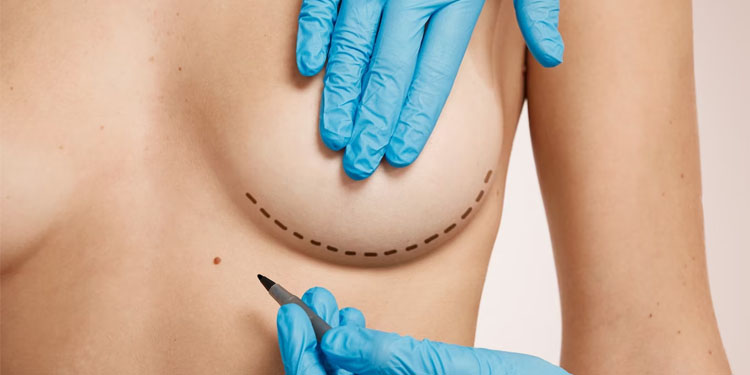
Life after breast reduction surgery can lead to significant improvements in physical comfort, self-confidence, and overall quality of life for many patients. It is essential to have realistic expectations and understand that the recovery process requires care and patience. Here are some aspects of life after breast reduction to consider:
- Recovery: The initial recovery period after breast reduction surgery typically takes about 2 to 4 weeks. Swelling, bruising, and mild discomfort are common but can be managed with pain medication and cold compresses as recommended by your surgeon. You will be advised to wear a supportive surgical bra or sports bra during the recovery period to minimize swelling and support the breasts as they heal. Strenuous activities, heavy lifting, and high-impact exercises should be avoided during the recovery period to allow proper healing.
- Scarring: Scarring is inevitable after breast reduction surgery, as incisions are required to remove excess tissue and reshape the breasts. However, a skilled plastic surgeon will place the incisions strategically to minimize their visibility. Over time, scars will typically fade and become less noticeable. Following your surgeon’s post-operative instructions and using recommended scar treatments can help to improve their appearance.
- Breast sensation: Some patients may experience temporary changes in breast and nipple sensation following breast reduction surgery. While sensation usually returns gradually over several months, there is a possibility of permanent numbness in some cases.
- Breastfeeding: Breast reduction surgery may impact your ability to breastfeed. While some women can successfully breastfeed after the procedure, others may have difficulty due to the removal of glandular tissue or disruption of milk ducts during surgery. If you plan to have children in the future and wish to breastfeed, discuss this with your surgeon during your consultation.
- Emotional adjustment: It is normal to experience a range of emotions after breast reduction surgery as you adjust to your new appearance. Feelings of excitement, relief, or even temporary regret may arise during the healing process. Open communication with your surgeon and having a strong support system can help you navigate these emotions.
- Long-term results: Breast reduction results are generally long-lasting, although factors such as pregnancy, weight fluctuations, and the natural aging process can cause changes in breast size and shape over time. Maintaining a stable weight and wearing supportive bras can help preserve the results of your surgery.
To ensure the best possible outcome and a smooth recovery, follow your surgeon’s post-operative instructions carefully and maintain regular follow-up appointments to monitor your progress. Remember to be patient, as it takes time for the final results of your breast reduction to become fully visible and for your body to adjust to its new proportions.

Breast Reduction Surgery
Breast reduction surgery, also known as reduction mammoplasty, is a surgical procedure to reduce the size of the breasts by removing excess breast tissue, fat, and skin. This procedure is typically performed on women who experience physical or emotional discomfort due to large breasts, which can include back, neck, and shoulder pain, skin irritation, difficulty finding clothes that fit, and self-consciousness. During the procedure, the surgeon will make incisions in the breasts and remove the excess tissue, fat, and skin. The remaining breast tissue will be reshaped and the nipples will be repositioned to create a more proportionate and aesthetically pleasing breast shape. Recovery after breast reduction surgery typically takes several weeks, and patients will need to wear a supportive bra and avoid strenuous activities during this time. The results of breast reduction surgery are typically long-lasting, but weight gain, pregnancy, and aging can affect the size and shape of the breasts over time.
Breast Reduction Surgery Cost
The cost of breast reduction surgery can vary depending on a number of factors, such as the geographic location of the surgeon, the surgeon’s experience and qualifications, and the extent of the procedure. In the United States, the average cost of breast reduction surgery ranges from including additional costs such as anesthesia fees, hospital or surgical facility fees, and post-operative garments. It is important to note that in some cases, insurance may cover the cost of breast reduction surgery if it is deemed medically necessary to relieve physical symptoms. Patients should check with their insurance provider to determine their coverage. Additionally, some surgeons may offer financing options or payment plans to help make the cost of breast reduction surgery more affordable.
Breast Reduction Frequently Asked Questions
Breast reduction surgery, also known as reduction mammoplasty, is a surgical procedure to reduce the size of the breasts by removing excess breast tissue, fat, and skin.
Good candidates for breast reduction surgery are women who experience physical or emotional discomfort due to large breasts. This can include back, neck, and shoulder pain, skin irritation, difficulty finding clothes that fit, and self-consciousness.
During breast reduction surgery, the surgeon will make incisions in the breasts and remove excess tissue, fat, and skin. The remaining breast tissue will be reshaped and the nipples will be repositioned to create a more proportionate and aesthetically pleasing breast shape.
Recovery after breast reduction surgery typically takes several weeks. Patients will need to wear a supportive bra and avoid strenuous activities for a few weeks after surgery. Pain, swelling, and bruising are common during the first few days after surgery, but these symptoms should gradually improve over time.
Like all surgical procedures, breast reduction surgery carries some risks, including bleeding, infection, scarring, and changes in nipple sensation. However, these risks are generally low and can be minimized by choosing a skilled and experienced surgeon.
In some cases, insurance may cover the cost of breast reduction surgery if it is deemed medically necessary to relieve physical symptoms. However, each insurance policy is different, and patients should check with their insurance provider to determine their coverage.
The results of breast reduction surgery are typically long-lasting, but weight gain, pregnancy, and aging can affect the size and shape of the breasts over time.




